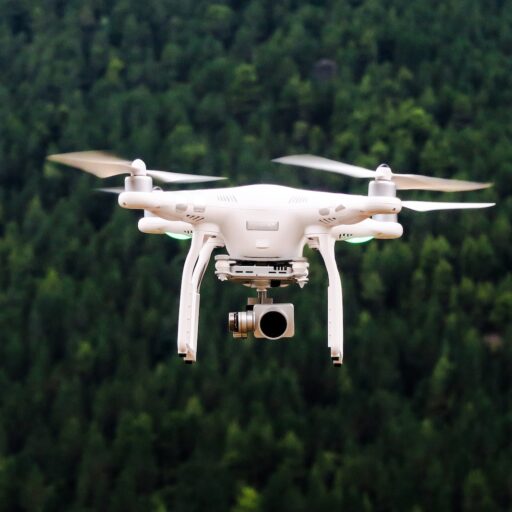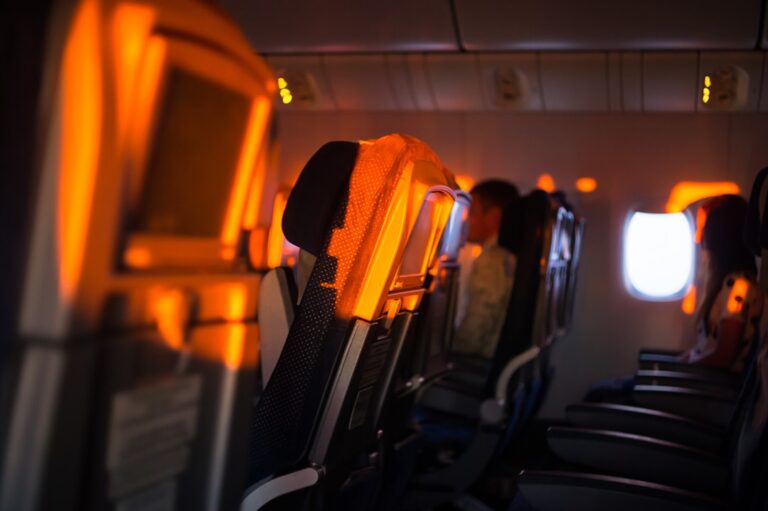Support our educational content for free when you purchase through links on our site. Learn more
Building Your Own Delivery Drone: The Ultimate Cost Breakdown [2024] 🚁
Ever dreamt of creating your own fleet of flying couriers? 🤯 The idea of drone delivery is both exciting and complex – and the cost of building your own drone is a big question mark. 💰 We’ve been building drones for years, and we’ve learned a thing or two about the ins and outs of this growing industry. In this comprehensive guide, we’ll break down everything from drone hardware to regulatory compliance, revealing the truth behind the price tag.
Do you really need to spend thousands on a delivery drone? 🤔 Or is there a smarter, more budget-friendly way to achieve your dream? We’ll explore all the possibilities!
Quick Answer
Building a delivery drone is a multifaceted endeavor, with costs ranging from hundreds to thousands of dollars. 💸
Here’s the bottom line:
- The drone hardware itself: Can range from a few hundred dollars for entry-level drones to thousands for advanced, high-performance models.
- Software and automation: Are essential for managing your drone fleet and optimizing delivery routes.
- Infrastructure: Includes storage facilities, charging stations, and landing pads – these are critical for ensuring smooth operations.
- The human element: Your team of pilots, technicians, and operations personnel, adds to the overall cost.
Ready to start your drone delivery journey? ✈️
Here are some places to shop for drones and accessories:
- DJI: Amazon | DJI Official Website
- Parrot: Amazon | Parrot Official Website
Let’s dive into the details and uncover the true cost of building a delivery drone!
Table of Contents
- Quick Tips and Facts
- The Evolution of Delivery Drones: From Hobby to Heavy Lifting
- Breaking Down the Costs: What Factors Influence the Price Tag?
- The Human Element: Pilots, Maintenance, and Operations
- Regulations and Compliance: Navigating the Legal Landscape
- The Future of Delivery Drones: What’s on the Horizon?
- Conclusion
- Recommended Links
- FAQ
- Reference Links
Quick Tips and Facts
Thinking of building your own delivery drone? 🤯 Buckle up, because it’s a journey. You’re essentially creating a small, flying robot capable of carrying packages. 📦 That means designing, building, and testing, which takes more than just a screwdriver and a dream. 🛠️
It’s also crucial to know this isn’t just about the drone itself. To create a successful delivery system, you’ll need more than just a drone. You’ll need a comprehensive understanding of costs from the drone itself to software, infrastructure, and even legal compliance.
Let’s break it down:
- DIY Vs. Buying: Building your own drone can be cheaper, but it requires technical expertise and a significant investment of time. Buying a pre-built drone might be costlier upfront, but you gain a ready-to-fly system with built-in features and manufacturer support. Check out our guide on building vs. buying a drone.
- Drone Type Matters: A basic drone for hobby purposes, like a beginner drone from DJI or a Parrot drone, might cost only a couple of hundred dollars. 💸 But a delivery drone with advanced features, like those used by Amazon Prime Air or Wing, could run into thousands. 🤔
- Beyond the Drone: You’ll need essential infrastructure, like a charging station, a landing pad, and software for flight management and route optimization. Also, don’t forget about pilots or software that can manage the delivery process! 👨✈️
- Regulations Exist: You need to comply with regulations, which vary depending on your location. 🗺️ We’ll explore this in more detail later, but failing to comply can have serious consequences. 👮♂️
Remember, building a delivery drone is a long-term project, and the costs can vary greatly based on your needs and goals. You might need several months of continuous development and testing before seeing results. ⏳
But hey, your own fleet of delivery drones, carrying packages like tiny flying couriers! ✈️ 📦 That’s pretty cool, wouldn’t you say?
Stay tuned, because we’re about to take you on a thrilling journey through the world of drone delivery. 🚁 Let’s explore the history, costs, and future of this exciting field. 🙌
The Evolution of Delivery Drones: From Hobby to Heavy Lifting
The dream of drone delivery isn’t new. 🌌 We’ve been captivated by the idea of flying machines carrying our packages for decades. 📦 Think of sci-fi movies like “Back to the Future” or “The Jetsons” – those iconic flying vehicles were the inspiration for many early drone enthusiasts. 🛸
But the real breakthrough came with the rise of consumer drones in the late 2000s. Companies like DJI and Parrot made drones accessible to the average person, sparking a wave of innovation and experimentation. 🧑🔬 Suddenly, the world was buzzing with possibilities. 🐝
However, early delivery drones were limited by technology and regulation. Think bulky, unreliable machines that couldn’t navigate complex urban environments. 😵 But with advancements in battery technology, autopilot systems, and sensor capabilities, things started to change dramatically. 💡
Imagine the evolution of drones:
| Timeline | Key Development | Impact on Drone Delivery |
|---|---|---|
| 2000s | Advent of affordable consumer drones | Early experiments |
| 2010s | Improved battery life and autopilot systems | Improved range and efficiency |
| 2013 – Present | Rise of companies like Amazon Prime Air and Wing, focusing on drone delivery | Commercialization taking flight ✈️ |
Today, we’re seeing a vibrant ecosystem of delivery drone companies. These companies are tackling everything from medical deliveries to package delivery in remote areas. 🚀 We’re even seeing drones used for disaster relief in areas inaccessible by traditional transportation methods. 🆘
The potential of drone delivery for improving logistics and accessibility feels boundless. 🗺️ However, there are still big challenges to overcome, including safety concerns, regulatory hurdles, and the need for further technological advancement. 🚧
This is where Drone Brands™ comes in. We’re passionate about understanding the challenges and opportunities of this exciting field. 💥 Our team of experts is dedicated to exploring the latest developments in delivery drones and providing valuable insights to individuals and businesses.
Think of us as your go-to guide for navigating the world of drone delivery. 🗺️ Are you ready to explore?
Breaking Down the Costs: What Factors Influence the Price Tag?
Building a delivery drone is a bit like building a house – you start with a basic foundation, then add layers of complexity to achieve your desired outcome. 🏡 But instead of bricks and mortar, you’re working with **drone hardware, software, infrastructure, and manpower.**👷♀️
Think of it as an investment, not just a cost. 💰 The money you invest today can potentially pay off in increased efficiency, cost savings, and expanded reach in the future. 📈
Drone Hardware: The Foundation of Your Delivery System
You’ll need the right drone to meet your needs. Are you delivering small packages to nearby areas, or are you handling larger payloads over long distances? The answer determines the drone’s payload capacity, flight range, and overall design.
Here are some key factors to consider:
- Drone Weight and Payload Capacity: Think about the weight of your packages and how far your drone needs to travel. A small drone with limited payload capacity may be suitable for delivering medicines to healthcare facilities within a short radius, while a larger drone capable of carrying heavier packages is needed for delivering groceries or other items across wider distances.
- Battery Life and Charging Time: The battery life of your drones impacts your delivery range. Think about how often you’ll need to recharge and the availability of charging infrastructure. You might also need backup batteries and portable charging stations for extended operations.
- Flight Control Systems: You need a reliable flight control system to navigate your drones safely and efficiently. Look for systems with features like GPS, obstacle avoidance, and auto-return capabilities.
- Sensor Technology: Advancements in sensor technology are revolutionizing drone applications. Delivery drones can use sensors to map routes, avoid obstacles, and even inspect packages for damage.
Think of the drone as the heart of your delivery system. 💓 Invest in high-quality components and choose the drone type that meets your specific needs.
Software and Automation: The Brains Behind the Operation
It’s not enough to have a drone. ✈️ You need smart software to manage your fleet, optimize routes, and track deliveries. Think of this as the brain of your operation. 🧠
Key software components include:
- Flight Planning and Route Optimization Software: This helps you create efficient delivery routes, avoid hazards, and ensure smooth drone operations. 🗺️
- Drone Management Software: This lets you monitor and control your drones, track their location, and manage battery life. You can even schedule deliveries and receive real-time updates on package delivery status. ⌚
- Delivery Tracking and Communication: Clear communication and accurate tracking are essential for providing your customers with a seamless delivery experience. Think about integration with existing delivery platforms or building your own tracking system. ✉️
Investing in high-quality software can significantly enhance your drone operation, increase efficiency, and ensure customer satisfaction. 🏆
Beyond the Drone: Essential Infrastructure for Delivery Success
You’ve got your drone, you’ve got your software, but you still need a place to store, recharge, and maintain your drones, and a landing zone where they can drop off packages safely. 🏢
Here’s what you need:
- Drone Storage and Maintenance Facility: You’ll need a secure and organized space for your drones, along with the necessary tools and equipment for maintenance. Think charging stations, repair kits, and cleaning supplies.
- Landing Pads and Charging Stations: You need safe and accessible landing pads and charging stations for your drones at each delivery location. Think about integrating your infrastructure with existing infrastructure like rooftops or parking lots.
- Network Connectivity: Reliable internet connectivity is crucial for controlling your drones, tracking deliveries, and managing your software systems. 📡
The infrastructure you build directly impacts your drone delivery system’s efficiency and effectiveness. 🏗️ Think about the location of your landing pads, the size of your storage facility, and the availability of reliable internet connectivity.
The Human Element: Pilots, Maintenance, and Operations
Remember, drones alone don’t make a delivery system. You need dedicated professionals to manage and operate your fleet. 👨✈️
Think about:
- Pilots and Operators: You’ll need qualified pilots with remote pilot certificates to fly your drones and follow regulations. 🧑✈️ You may also need other operators to manage the delivery process, track packages, and handle customer inquiries.
- Maintenance Technicians: Regular maintenance is essential for keeping your drones in top condition. You’ll need skilled technicians to perform routine checks, repairs, and software updates. 🔧
- Operations Management: Think about managing your delivery system’s logistics, including scheduling deliveries, tracking packages, and managing customer communications. 🤔
The people you hire contribute significantly to the success of your drone delivery business. Choose reliable and skilled individuals who are passionate about embracing new technologies and working as a team. 🤝
Regulations and Compliance: Navigating the Legal Landscape
It’s not just about building a drone! You need to understand and comply with regulations, which can vary depending on your location. 🗺️
Key areas to consider:
- Drone Registration: You need to register your drones with the relevant authorities, ensuring they comply with safety standards and operational requirements.
- Remote Pilot Certification: Many countries require pilots to obtain remote pilot certificates to fly drones commercially. This involves passing a test and demonstrating your knowledge of aviation regulations and safe drone operations.
- Commercial Drone Operations: Specific regulations govern commercial drone operations, including payload limits, flight restrictions, and noise limitations. ✈️ You need to understand and comply with these rules to avoid penalties.
Remember, ignoring regulations can lead to fines, sanctions, or even loss of your drone. 🚧 It’s always best to stay informed and seek legal advice if you’re unsure about how regulations apply to your drone delivery business.
Let’s move on to the future of drone delivery! Prepare yourself for exciting developments and innovative solutions. 🚀
The Future of Delivery Drones: What’s on the Horizon?
The future of drone delivery is bright, full of innovation and potential. 💥 We’re on the verge of a drone-powered revolution, where deliveries are faster, more efficient, and accessible to more people than ever before. 🗺️
Here’s what we’re excited about:
- Further Advancements in Drone Technology: Expect smaller, lighter, and more powerful drones with extended battery life and advanced flight capabilities. ✈️
- Integration with Existing Delivery Systems: Drones are likely to become an integral part of existing delivery networks, working alongside traditional delivery methods and forming a hybrid system.
- Rise of Autonomous Delivery: We’re seeing increasing development in autonomous drone technology, enabling drones to navigate and deliver packages without human intervention. 🤖
- Expandability to New Applications: Drone delivery will likely expand beyond package delivery, encompassing medicine, emergency supplies, and even food delivery. 🚀
Remember, the future of drone delivery isn’t about replacing traditional methods; it’s about finding innovative ways to complement them and create a more robust and efficient delivery ecosystem. 📦
The journey of drone delivery is just beginning. ✈️ What are your thoughts on the future of drone delivery? 💬
We’re excited to continue exploring this exciting field and sharing our insights with you.
Let’s conclude this journey and reflect on what we’ve learned about building a successful delivery drone. 🎉
Conclusion

Building a delivery drone is a challenging but rewarding endeavor. It’s not just about the drone itself; it’s about creating a holistic system that encompasses hardware, software, infrastructure, and human expertise. 🧑💻
The journey starts with understanding your needs and choosing the right drone platform. ✈️ You’ll need to consider payload capacity, flight range, battery life, and features like obstacle avoidance and autopilot systems.
Remember, software plays a crucial role in managing your fleet, optimizing routes, and tracking deliveries. 🗺️ You’ll need a reliable platform to ensure smooth operations and a seamless customer experience.
And let’s not forget about infrastructure: secure storage facilities, charging stations, and safe landing zones are essential for a successful operation. 🏢 Don’t underestimate the importance of maintenance and skilled technicians to keep your drones in top condition. 🔧
Finally, legal compliance is a non-negotiable aspect of drone delivery. Be sure to register your drones, obtain pilot certifications, and comply with all relevant aviation regulations. 👮♂️
Drone delivery is shaping the future of logistics, offering faster, more efficient, and more accessible solutions. 📦 This exciting field is filled with potential, and we’re just beginning to see the impact it will have on industries worldwide.
Do you have any questions about building a delivery drone or the future of this exciting technology? 💬 We’re here to provide insights and support your journey.
Recommended Links
👉 Shop for drones and accessories on:
- DJI: Amazon | DJI Official Website
- Parrot: Amazon | Parrot Official Website
- Amazon Prime Air: Amazon | Amazon Prime Air Official Website
- Wing: Amazon | Wing Official Website
Explore educational resources on:
- “Drone Delivery: The New Frontier of Logistics” Amazon
FAQ

How much would a delivery drone cost?
The cost of a delivery drone can vary significantly depending on its features, payload capacity, range, and technology. 💸
- Basic drones for hobby purposes: Can cost as little as a couple of hundred dollars.
- Delivery drones with advanced features and longer range: Can cost thousands of dollars.
What are some basic drone delivery costs?
- Small, hobby-grade drone: $200 – $500.
- Mid-range drone with payload capacity: $1,000 – $3,000.
- High-end delivery drone with long range and advanced features: $5,000 – $10,000.
Is it cheaper to build or buy a drone?
It depends! 🤔
- DIY drone build: It can be cheaper, but it requires technical expertise, time, and a commitment to learning and troubleshooting.
- Ready-made drone: It’s more expensive upfront, but you get a reliable and ready-to-fly system with manufacturer support.
Is a drone delivery business good?
There’s a lot of potential in drone delivery businesses right now. The demand for quick, efficient deliveries is growing, and drones can offer unique solutions for a variety of industries. Find out more about starting a drone delivery business here.
Read more about “Parrot Bebop 2: A Comprehensive Review … 🚁”
How expensive is it to build your own drone?
The cost of building your own drone can vary based on the complexity of the design and the components you choose.
- Basic drone build: Can be done for around $300 – $500.
- Advanced drone with custom components: Can cost over $1,000.
Read more about “Can I Start a Drone Delivery Business? 7 Steps to Take Off 🚀 … “
How much does Amazon drone delivery cost?
Amazon has not publicly disclosed the cost of its Prime Air drone delivery service. However, it’s likely to be dependent on the distance, weight, and complexity of the delivery.
Remember, there’s a lot to consider, and the answer will depend on your individual requirements and goals.
Read more about “Drone Business License: 10 Steps to Launching Your Aerial Adventure …”
Reference Links
- “Drone Delivery Cost Analysis”: http://www.itskrs.its.dot.gov/2020-sc00463
- “Buying vs Building a Drone”: https://www.autelpilot.com/blogs/tips-tutorials/buying-a-drone-vs-building-a-drone#:~:text=Cost%2DEffectiveness%3A%20DIY%20kits%20are,assembly%20of%20the%20same%20parts.
- “How Much Does A Drone Cost?”: https://www.jouav.com/blog/how-much-does-a-drone-cost.html
- DJI https://www.dji.com/
- Parrot https://www.parrot.com/
- Amazon Prime Air https://www.amazon.com/Amazon-Prime-Air/s?k=Amazon+Prime+Air
- Wing https://wing.com/


